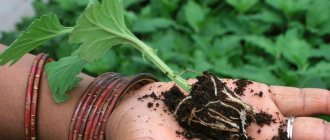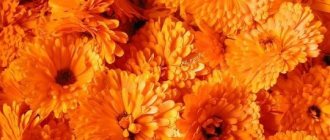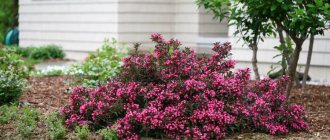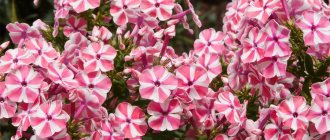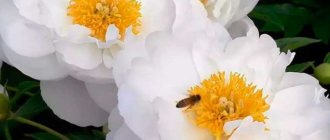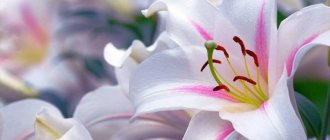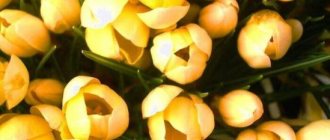The flower culture with such a beautiful name Lobelia is an annual ornamental herbaceous plant, valuable for its lush and beautiful flowering. Gardeners grow it in open ground, in composition flower beds, and in a hanging form, which allows the formation of decorative hanging compositions. Today our topic is planting, flower care and the main types of Lobelia.
The flower “cap” of lobelia consists of numerous flowers, the color palette of which captivates with white, blue, lilac, pink, and red colors of small openwork flowers against the backdrop of openwork greenery.
As a hanging crop, lobelia is widely in demand by flower growers, thanks to the ease of its cultivation and long, openwork, brightly flowering shoots, which give hanging compositions featuring it a special lightness and elegance.
Perhaps someone will find it troublesome to propagate lobelia through seedlings, which are almost impossible to do without, because this flower crop, as noted above, is an annual plant.
How to plant and grow lobelia?
Considering one of the important qualities of this plant is to be used for growing in hanging pots, these flowers can be grown for decorative purposes not only in open ground, but also on open balconies and loggias with alternating natural light and in a fairly windward direction.
Thanks to its bright and lush flowering, lobelia will be a wonderful addition to your flower garden or flower bed.
Flower varieties
Lobelia comes in several types.
Dwarf
The plant branches heavily, reaches a height of 20 cm. The flowers are small, about 2 cm. The colors are blue, white, purple, pink. This variety, in turn, is divided into two subspecies:
- ampelous;
- ordinary.
The flower adapts perfectly to different climatic conditions, is able to grow and develop equally actively, both in the shade and in a sunny area.
The only important thing for him is that the soil is always moist.
Compact
This variety is in great demand because it can be grown not only in the garden, but also at home, on the balcony. Another compact lobelia is often used to decorate flower beds. It grows no more than 15 cm in height.
It is characterized by abundant and long flowering, which is also a huge plus. The color of the flowers is predominantly blue.
Erect
This variety is distinguished by a straight stem and a height of up to 75 cm. Lobelia of this variety prefers high humidity. For this reason, in wild places, she likes to be located next to bodies of water and wetlands.
Flower color is mostly red
Ampelnaya
This type of plant is characterized by the presence of long shoots. It is recommended to use flowers for flower pots and home flower beds. By color there are white, blue with a white eye or heavenly with a white eye.
The variety is quite resistant to temperature changes.
What planting soil is suitable for lobelia?
Lobelia is not a picky plant: most of all, it requires loose, light soil with the inclusion of peat. In open ground, for its successful growth and flowering, an equal amount is necessary, in addition to the main soil of the flower bed, humus and river sand. Slightly acidic or neutral soil characteristics are preferable for it.
For your information! You should not apply excess fertilizer to lobelia because this will make flowering less abundant.
For the ampelous form of growing lobelia, it is better to purchase soil at a specialized garden store, and this purchase will not be expensive.
Preparation for the sowing procedure
For further sowing, you will need to prepare the soil and container.
What primer should I use?
For lobelia, you need to prepare the soil. The flower loves soil with the following characteristics:
- ease;
- looseness;
- high air and moisture permeability;
- neutral acidity.
It is better to purchase soil in a store, since it already has all the above qualities, so it will free you from unnecessary worries. You
can prepare the soil yourself from soil, humus, river sand and peat in a ratio of 2:2:1:1.
If the soil is highly acidic, it is necessary to add a small amount of wood ash or dolomite flour to it before planting. These components are capable of neutralizing acid.
Before sowing, it is important to disinfect the soil using high temperature. To do this, place in the oven for half an hour, maintaining 90 degrees. Then hold it over steam for 60 minutes.
Selection of capacity
You can sow lobelia in any container; there are no strict requirements for choice. The main thing is that it is spacious and not too deep. Flower growers purchase special containers in stores or adapt something at hand.
The following options are possible:
- wooden boxes;
- plastic cups;
- peat cups or tablets;
- plastic cassettes;
- flower pots.
At home, you can make a wide variety of containers with your own hands, you just have to show your imagination
It is important that the bottom of the container has holes for drainage. They are not required only when using peat cups and tablets.
How to plant - sow lobelia?
Lobelia seedlings are sown with seeds in a low container 3-5 centimeters deep. You can buy a flower container or use improvised means. If possible, you can sow it in open ground and pots.
The timing of sowing this flower crop for seedlings, taking into account its vegetative regime, is at the beginning of February. It can be sown in open ground from the second half of April to the end of May. For its seeds to germinate, two weeks are enough with appropriate care of the crops, which require gentle irrigation through a spray bottle.
Lobelia seeds are very small and should be sown with the expectation of preventing future seedlings from thickening in the following ways:
- Add a little fine dry sand to the bag of seeds and use a toothpick to mix it evenly with the seeds, so that with circular movements of your fingers, folded in a pinch, scatter this mixture over the surface of the planting soil.
- Moisten a wooden stick, preferably an ice cream stick, with water, shake off any drops and immerse it in the seeds, which will stick to the stick. Using a toothpick, gently shake them off, distributing them evenly over the seating surface.
- Cover the planting soil with a layer of snow, and scatter lobelia seeds on top of it in any way so that it will gradually melt and more or less evenly distribute the sowing.
Granulated seeds make it easier to sow lobelia, as they are easier to distribute evenly over the soil.
Lobelia seeds sown on moist soil are not sprinkled with soil on top - they need maximum light to germinate.
Choosing a growing container
As for choosing a container for sowing lobelia, there are no fundamental points here. You can choose almost any planting container that is convenient for you.
For example, you can use a plastic or wooden box, plastic or peat cups, plastic cassettes, peat tablets , various bowls, and homemade containers. But it is best to choose a wide and shallow container for sowing.
Important! Planting containers must have drainage holes (except for peat tablets and cups).
Features of caring for lobelia seedlings
The container with sowing lobelia, like many other plants, should be placed in a transparent plastic bag immediately after sowing and this “greenhouse” should be walked for a short time every day for no more than half an hour to avoid soil mold. Remove condensation from glass or bag with a dry cloth.
Due to the fact that thinning for seedlings of this plant is undesirable and is not very successful, it is necessary to prevent thickening even when sowing seeds, especially during hanging propagation.
What should be the lighting for lobelia seedlings? In conditions of incomplete lighting, lobelia seedlings should be provided with sufficient lighting using a phytolamp. Otherwise, the sprouts become thinner and stretch out frail.
Watering the crops before germination should only be done through a spray bottle.
Further care in open ground
Lobelia is an undemanding plant to care for. All care after planting cuttings or seedlings in the ground comes down to watering, pruning, fertilizing and loosening.
- In hot weather, the flower garden with lobelia is watered twice a day (morning and evening). The surface soil should be kept moist at all times.
- Lobelia grows well only on breathable soil, so you need to loosen it regularly. Care should be taken during this procedure - the root system of the flower is very delicate.
- For abundant flowering, it is enough to fertilize on time. Before flowering, potassium fertilizers are added to the soil during loosening. After fertilizing, the soil should be well watered. During flowering, complex preparations are added - you can choose a liquid or dry form. A month after the first feeding, you can repeat the procedure.
- Abundant flowering of lobelia begins in June and continues throughout the summer. To prolong this process, the plant is pruned in August, leaving five-centimeter stems above the ground. The formation of young stems will begin with the formation of new buds. Flowering after pruning will last until the first frost.
- Ampelous varieties require pinching to form a beautiful bush. Other types of lobelia can be pinched back if necessary.
Read more about the features of planting and further care here.
What to do if it doesn’t take root?
The reasons for a plant’s failure to survive vary, but the situation can always be corrected:
- If three weeks after sowing the seeds no seedlings have appeared, then it is necessary to replant. This problem occurs if old seed is used (more than 2-3 years old).
- The second reason for the lack of seedlings is an error during sowing. Lobelia seeds do not need to be sprinkled with soil; they need sunlight to germinate.
- Another reason for the lack of seedlings is the drying out of the greenhouse surface. To avoid the problem, it is enough to monitor the soil moisture.
Problems may also arise with seedlings:
- If seedlings rot when grown under a film, then it is necessary to use a cover with holes. This method guarantees good ventilation with sufficient humidity (a transparent plastic cake lid with small holes is often used).
- Sometimes seedlings die during a dive. This situation occurs when the root system is underdeveloped. To prevent significant damage to the roots, the seedlings should be removed along with the earthen ball. A radical solution to this problem is planting seeds in peat tablets, which allows you to do without diving.
- And another fairly common mistake in caring for seedlings is watering with too strong a stream of water. Lobelia seedlings are very tender; with such watering, they fall and die.
It is recommended to water young shoots from a spitz or through a tray.
Lobelia is an unpretentious beauty that can transform any piece of land into a full-fledged flower garden. To ensure abundant flowering of the plant, you must follow a few simple rules:
- maximum diffused bright light;
- abundant watering;
- radical pruning in August.
And if you dig up a plant for the winter and provide it with care in the room, then next year you can get even more positive emotions from the overgrown bright bush.
How to care for lobelia?
Lobelia is a light-loving plant, but does not tolerate prolonged sun exposure in the summer. Therefore, variable lighting will be optimal. This applies to all periods of the growing season of this plant. Faded shoots can be carefully trimmed to the base of the bush. New shoots will grow and actively bloom.
Flower growers know and advise us to place lobelia plantings next to lush and tall ornamental plants. For example, next to bamboo or pelargonium.
General description with photo
In different classification systems, lobelia is classified either in the Lobeliaceae family of the same name, or in the Kolokolchikov family. In nature and in ornamental gardening, the crop is represented by both annual and perennial varieties. It can take the form of a bush, subshrub or herbaceous plant. For growing in the garden, preference is often given to compact species no more than half a meter in height, although some varieties can grow up to 1.5 m. The plant has fragile shoots that branch from the very base of the bush. The peduncles are short, the buds are small, but the flowering is abundant, in bright colors, mainly in blue-blue tones. The first flowers bloom in June, do not last long, but continuously replacing each other, create the effect of continuous flowering until the onset of autumn cold weather. The fruit is a capsule with very small seeds that remain viable for up to 3 years.
Types of lobelia
The ability of lobelia to plastically participate in the creation of all kinds of landscape compositions with a flowering carpet puts it among the recognized flower beauties such as roses and hydrangeas, irises and periwinkle.
The genus of this plant includes more than 400 species; below we will present a list of its most popular representatives.
- The genus includes more than 400 species[2]. But we will name some of them:
- Lobelia purpurea, or Lobelia cardinalis, or Lobelia blood-red - Lobelia cardinalis L.
- Lobelia dortmanna L.
- Lobelia erinus, or Garden Lobelia, or Black Lobelia, or Border Lobelia, or Blue Lobelia - Lobelia erinus L.
- Senegalese Lobelia - Lobelia senegalensis
- Lobelia inflated, or Lobelia puffy, or Indian tobacco - Lobelia inflata L
From everything that has been written it follows that growing and caring for Lobelia, both hanging and in open ground, is not difficult, but requires delicacy at the stage of transplanting and watering the seedlings. Otherwise, it is quite unpretentious and capable of restoring cut shoots and is a long-flowering plant. Colorful, multi-colored, lush and combined with other tall ornamental plants, it easily fits into any landscape composition and will delight others for a long time with its excellent decorativeness.
How to choose the right seeds
Like any other flower, lobelia needs frequent watering, especially in hot weather. As for the light, don’t worry, this plant will delight you with a neat appearance both in a bright place and in partial shade. It is not afraid of frost; it will continue to flower until the onset of frost.
Lobelia comes in two types: bush and ampelous. You need to choose seeds depending on what kind of plant you want to get. The bushes form a beautiful low ball, the leaves are almost invisible behind their flowers. Ampelous lobelias do not bloom as profusely and require much more effort in care.
To grow healthy and strong seedlings, follow these recommendations:
- Do not forget about regular moderate watering, as lobelia cannot withstand either too dry or waterlogged soil.
- Choose the right lighting. Seedlings need bright, diffused light.
- Harden off, that is, take the plant out into fresh air.
This species can have a bush or ampelous form. Lobelia flowers, depending on the variety, can acquire different shades. The most common buds are purple, white, blue, red and blue. They can grow both in pots on the windowsill and in the garden.
Very often such crops are used in landscape design. Forming a lush ball, they bloom from June to September.
Pests and diseases
Lobelia Sapphire can only get sick if agricultural practices are not followed and the space for growth is incorrectly allocated. In other cases, the variety is characterized by strong immunity. The most common problems are root rot and powdery mildew. Spots on leaves appear at high air humidity and insufficient lighting.
At the first signs of infection, lobelia is treated with one of the following:
- "Profit";
- Bordeaux mixture;
- "Fitosporin";
- "Tattu."
Thrips can parasitize Sapphire; lobelia is treated with Confidor or Decis. Less often, slugs cause damage; they are collected by hand, and “Metaldehyde” is placed under the bush.
Landing
In the fall, 5–6 kg of humus and 2–3 kg of peat per 1 sq. m. are added to the soil. m, and also, if necessary, to loosen the soil, add sand. The earth is carefully dug up, removing all rhizomatous weeds.
Planting of well-developed seedlings begins in early June, and in warm spring or in the southern regions they are planted earlier - from the second ten days of May. To obtain borders, annual lobelias are placed at intervals of 15–20 cm, spreading forms at intervals of 25–30 cm, large perennials are placed as small groups of 3–5 pieces each or as spectacular tapeworms.
After planting, the seedlings are watered and the soil is mulched. For several days, it is advisable to cover the bushes with jars to maintain leaf turgor.
Answers to frequently asked questions
What is the best substrate to sow seeds in?
Preference should be given to the one sold in specialized stores, since all the vitamins and microelements in it are balanced.
Seeds do not germinate, what should I do?
There may be several reasons for this: the seeds are old or affected by diseases, lack of sunlight, improper care. To solve this problem, the growing conditions should be reconsidered; this is most likely the reason.
Rules for sowing seedlings
The soil for sowing lobelia should be loose and moisture-absorbing. You can use a ready-made substrate for seedlings by adding perlite and sand to it in a concentration of 10:1:1. To make your own soil, mix leaf soil, peat, sand and perlite (10:10:1:1). Before use, the leaf soil is steamed for an hour to destroy possible pest eggs. It is enough to wash the sand several times.
The containers are chosen to be flat and wide, holes are made in them to drain excess moisture, a layer of drainage and soil is laid, lightly compacted, and watered. Lobelia seeds are dusty, so they are sown superficially. Granular ones are pressed lightly. For distribution, use a toothpick or needle. To prevent the seeds from merging with the dark soil, it is sprinkled with sand or snow. You can mix them with sand to distribute them more evenly throughout the container.
To grow lobelia from seeds you will need greenhouse conditions and a temperature of 18-22 degrees. The containers are covered with a plastic bag or glass. Ventilate twice a day for half an hour to prevent condensation from accumulating. Its drops are the main “scourge” of young seedlings susceptible to blackleg. Sprouts appear after 2 weeks.
Lobelia in garden design
The rich color range of lobelia is often used to create incredible patterns and compositions. The photos amaze with the imagination of landscape designers who work wonders with these flowers.
Anyone can create a summer extravaganza with lobelia.
Pinching and pruning seedlings
After picking, I water the seedlings with a fertilizer solution that contains, in addition to a large amount of phosphorus, other nutrients. In a week or two, the bushes will look great, but for this the plants need help, namely, pinching the shoots to awaken the dormant buds in the leaf axils. But since we have a lot of seedlings, I will simply trim their stems with scissors.
If you do not prune, the bushes will not become lush. Don't be afraid to trim your lobelia: it is a ground cover plant that responds well to no pruning. We grow a bush variety, but ampelous lobelia also likes pinching. I intend to give my seedlings a total pruning. What will come of this, you will find out later.
All the best.
Collection and storage of seeds
Lobelia pods and seeds
Lobelias produce small, numerous seeds that develop in small bivalve capsules. The seeds are oblong, very small - no more than 0.6 mm long, shiny. The color depends on the color of the flowers - white lobelias have light cream seeds, dark ones - brown.
The seeds ripen from the end of August; selective collection begins in dry, windless weather, waiting for ripening, and not allowing the capsules to open as soon as they turn light brown. The boxes are collected together with segments of shoots and laid out on paper for ripening and drying, noting the variety.
After drying, the leaves are kneaded with your fingers, debris is removed and the seeds are packed in paper bags, signed with the name of the variety, time of collection and stored in a cool, dry place.




